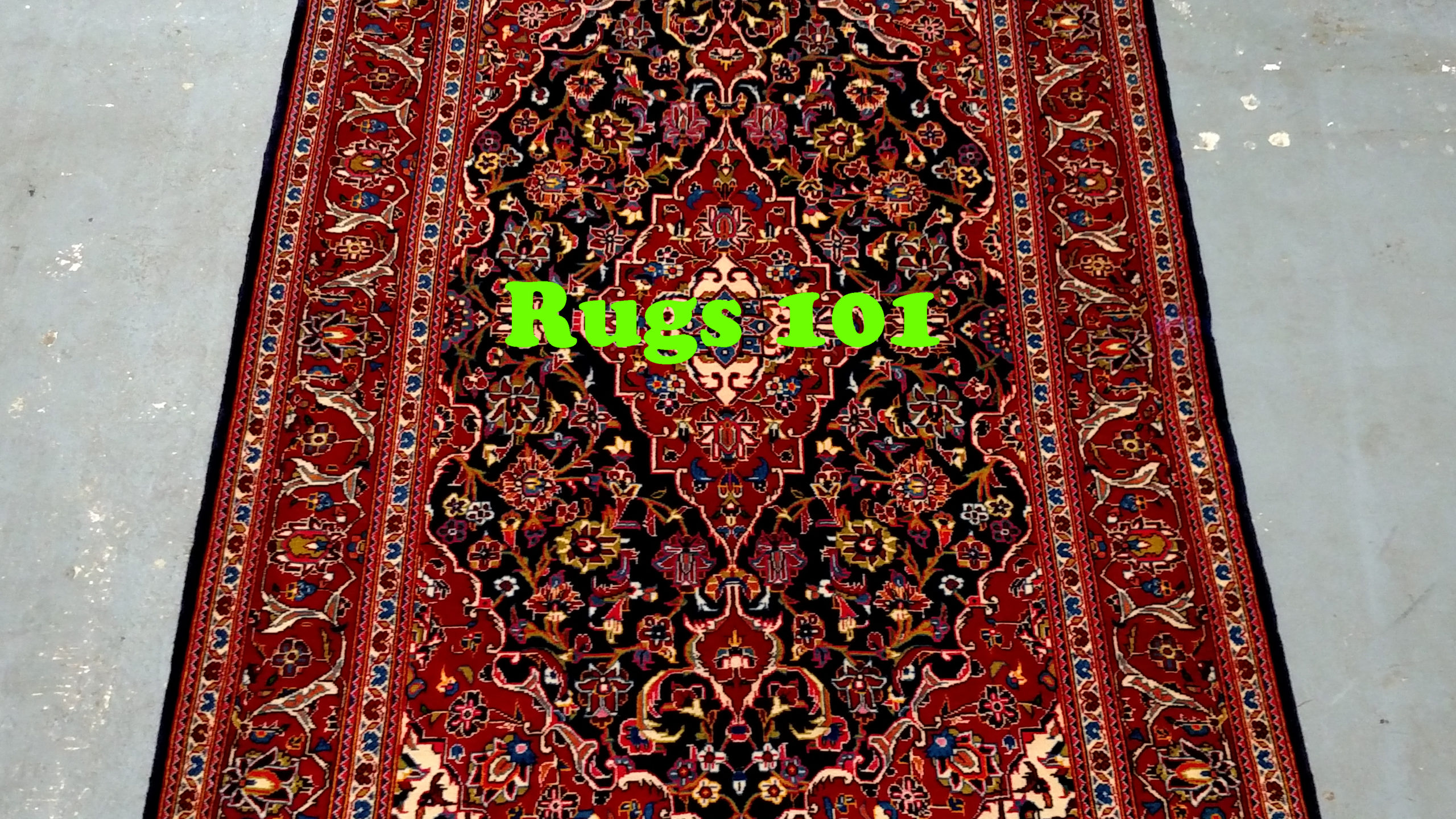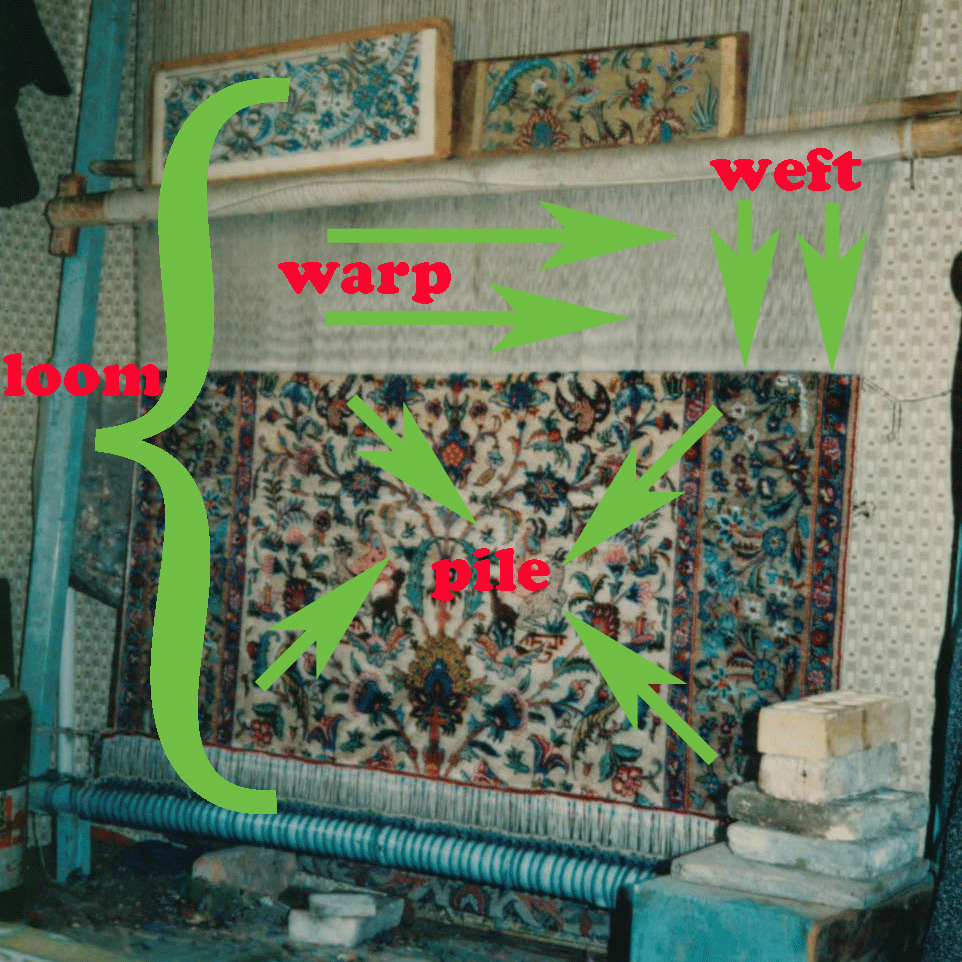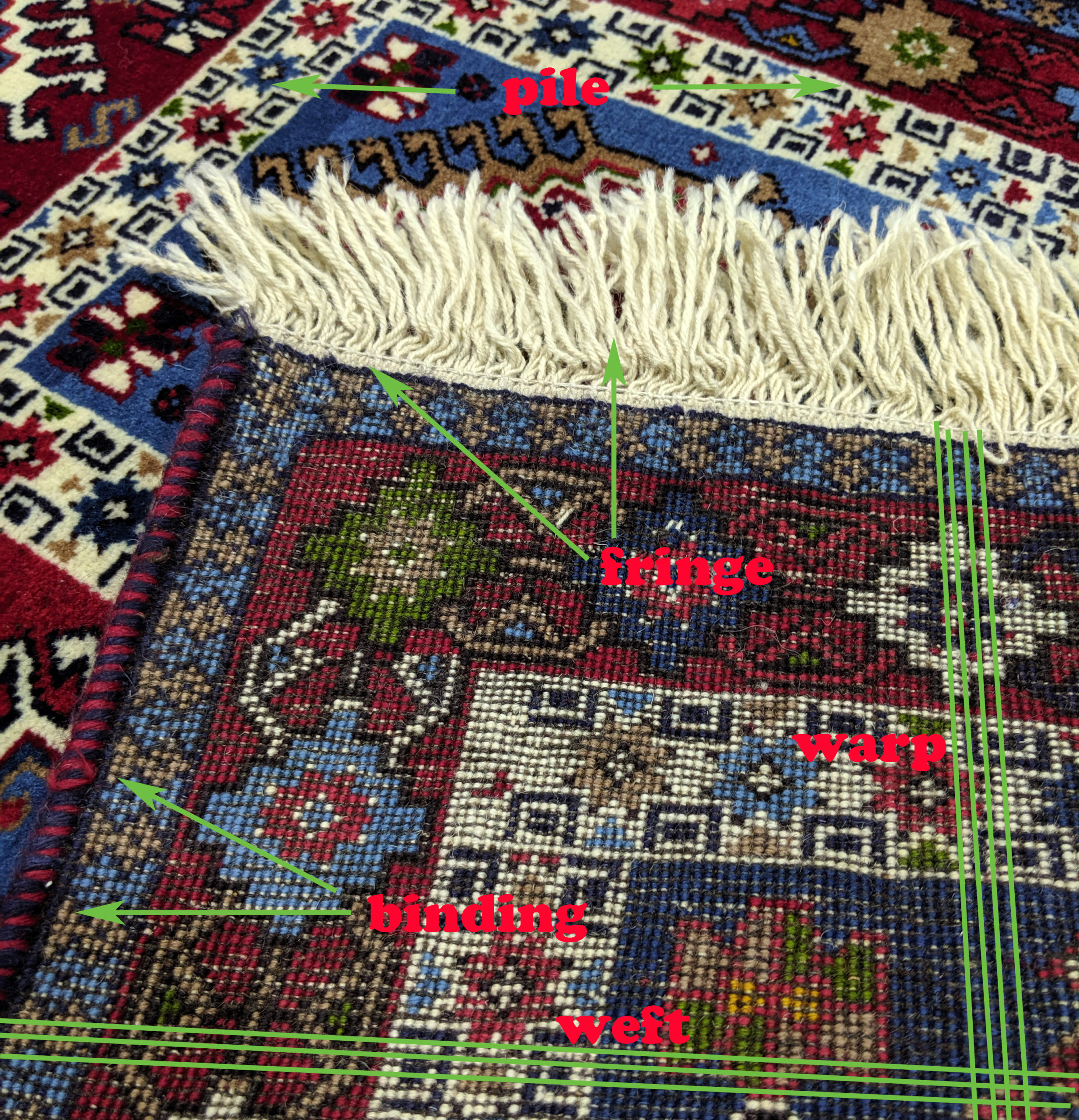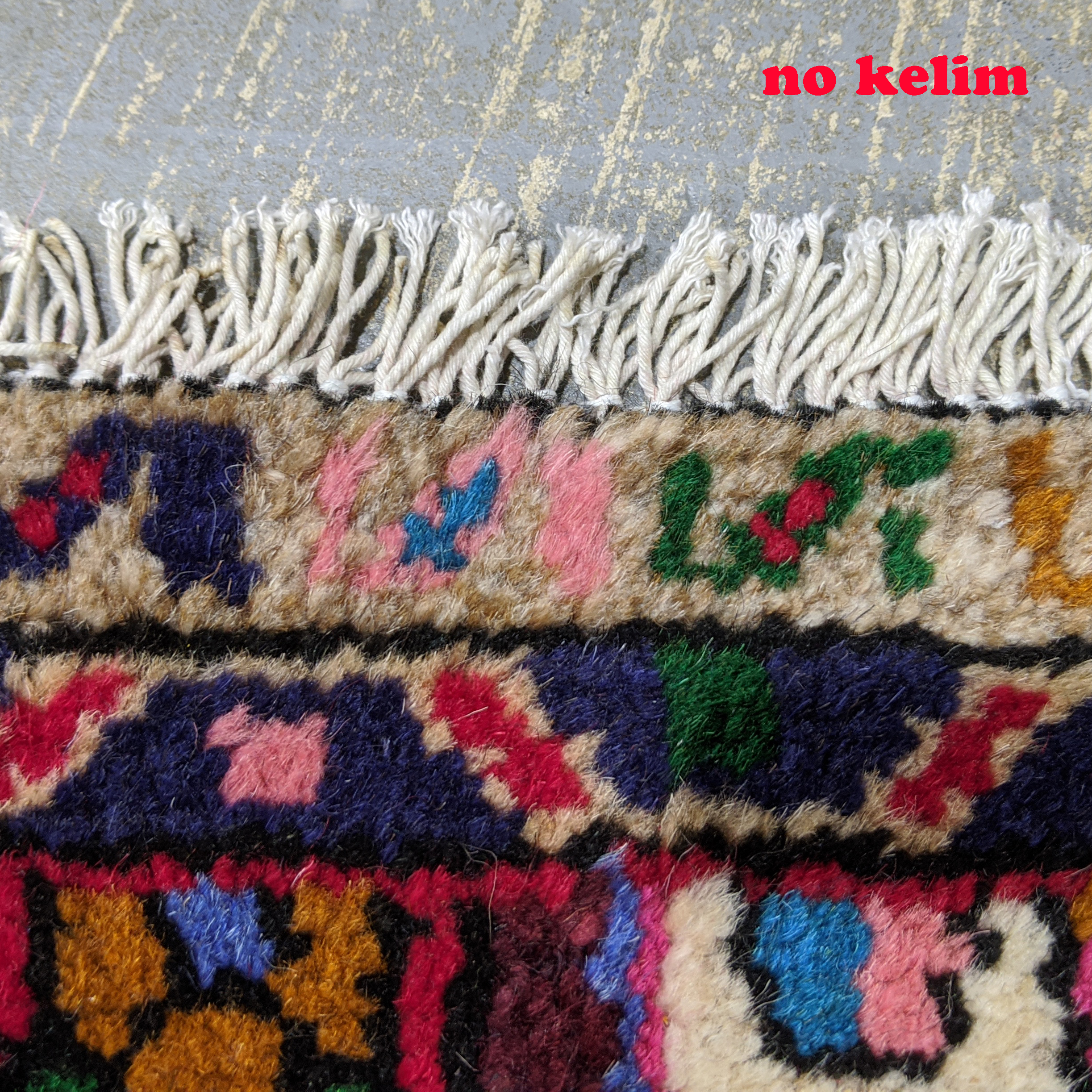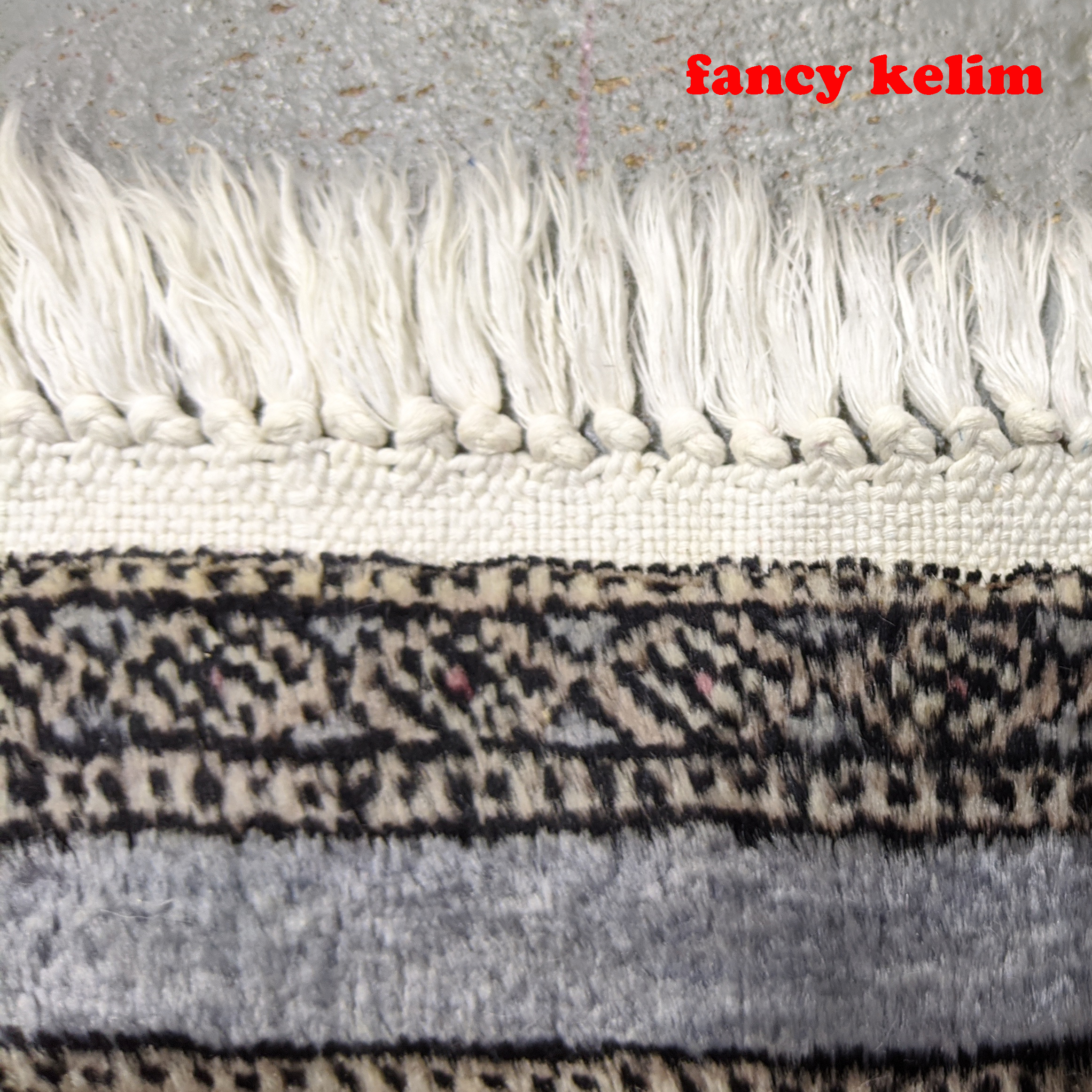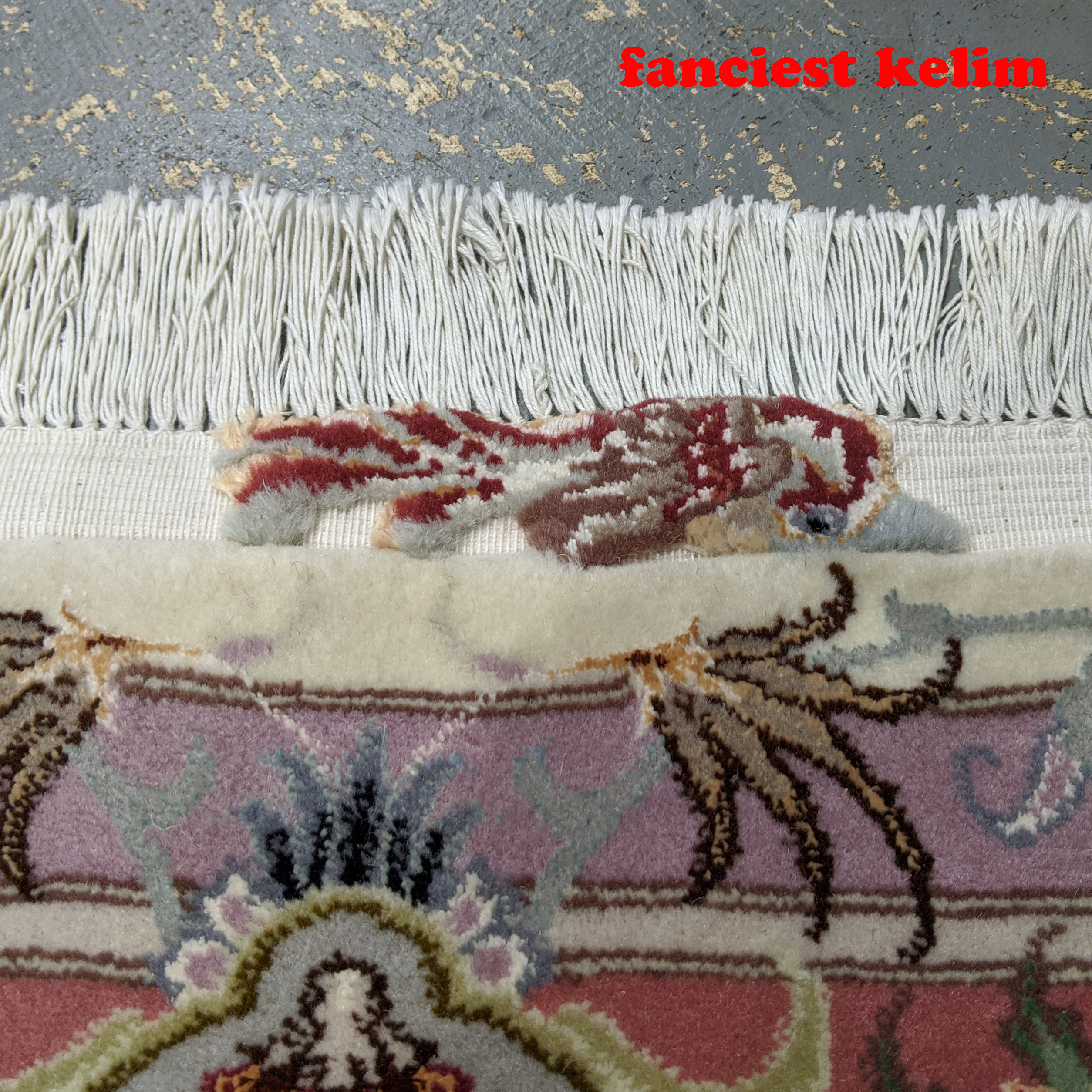Thanks for coming back! This is the second part of a two part series about the various parts of a rug. In this post, you’ll learn all of the basic rug terms which refer to the structural parts of a rug. You can see the first part which addresses the decorative parts of a rug here.
In this post, unless otherwise noted, we’ll be talking about hand-knotted, pile rugs. In almost all cases, these structural terms will be the same across rugs of all types. For practical purposes, we’re just going to start with the hand-knotted rugs because when people think of handmade or Persian rugs, they tend to think of the knotted variety.
Structural Parts of a Rug During Weaving
Let’s be clear, this is the Cliff’s Notes explanation of how rugs are woven, but it is all you need to know to sound like you know what you’re talking. Almost all rugs – both handmade and machine-made – are made on a loom. A loom is a structure used to tautly hold vertical threads which are then turned into textiles. (For practical purposes, we’re going to be using the term “loom” to refer to a vertical loom, but know that just like there are many types of rugs, there are many types of looms.)
These vertical threads, known as the warp, are the beginnings of the rug’s foundation onto which a rug is woven. In knotted rugs, the knots are tied directly onto the warp threads row by row. After a few rows of knots have been completed, a horizontal thread known as the weft, is interlaced with the warp threads to hold the rows of knots into place. Together, the warp and the weft are considered the rug’s foundation.
Tip: The way I remember the difference between warp and weft is that ‘warp’ sounds like ‘harp’ and both have strings that go up and down.
The rows of knots that slowly become the rug create what is called the pile (sometimes called nap). When you get out of bed in the morning and step barefoot onto your rug, you’re sinking your toes into the rug’s pile. We won’t get into knots in this post, but you can see some excellent info here.
Look below at a very old picture of a loom used when my family manufactured rugs in Iran decades ago. The entirety of what you’re seeing is basically the loom. The copious, vertical strings that are visible are the warp. The weft is not visible, but trust me when I say that a horizontal line of weft thread was woven across that last line of knots. The pile is all of the knots that make up the rug that you see woven so far.
Are you getting any of this? Good! If not, please feel free to reach out to me directly, and I will talk your ear off. A little bonus info you can glean from this picture is how rug patterns are created. Do you see what look like two small paintings resting on the top ledge of the loom? These are paintings of the rug’s design done on graph paper, and they are done in sections to guide the weaver.
Structural Parts of a Rug Upon Completion
Now that we have a basic idea of what we call all of the structural parts that make up a rug, let’s delve into what parts are called on the finished product. The pile is still called the pile, my friends, so you’re already ahead!
When the rug is completed and cut off of the loom, the warp threads are left hanging from either end. These threads get knotted to prevent unraveling and form what is called the fringe (or tassels). Beyond the knot of the fringe, the threads are purely decorative, so it can be cut to any length. The sides of a rug are bound to produce a nicely finished edge. We like to call these edges the rug’s binding. Those in the rug industry will sometimes use the term selvage, edge finish or overcasting to describe this part. It is worth noting that that the lifespan of the fringe and binding of a rug is just a fraction of the lifespan of the rug itself. This is normal, and you can click these links to find out more about our fringe repair and binding repair.
Below, you will see a lovely little piece with the rug parts pointed out. I’ve opted to show the back of this rug so you can clearly see the fringe emerging from the rug and the binding wrapped around the edges. This sweet little rug is a Yalameh Persian rug which is known for having the multi-colored binding, something a little extra special for this lesson! You’ll also notice that I’ve drawn some vertical and horizontal lines to show you where the warp and weft in this rug are located.
Extra Credit
We’ve covered the bare bones of rug parts, but there is a tiny bit of extra credit I want to throw into these vocab lessons, and that is the term kelim. Kelim (sometimes spelled kilim) is a word used to describe a type of rug weave, specifically a flat-weave rug. Kelim can refer to an entire, flat-weave carpet, or it can refer to just a part of a carpet. Since our focus of the last two posts has been pile rugs, we’ll discuss the use of the term kelim as it relates to just a part of a rug. (We’ll get into other kelim types and also rug construction at a later date.)
When a rug is completed, but the weavers are feeling a little fancy, they’ll use warp and weft strands to create a teeny tiny flat-weave area of rug between the end of the pile and the knot of the fringe. This little bit of flair is called the kelim. Kelims can be just plain white, multi-colored, or even interspersed with flourishes of pile rug. Below are examples of kelim finishes on rugs ranging from very simple to very fancy.
This concludes Part 2 of your lesson. You are now ready for cocktail party banter!

